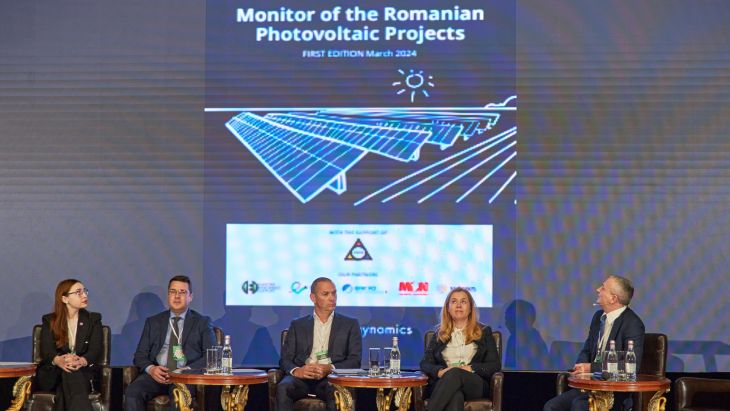Balancing costs

Zoltan Nagy Bege, Energy Market Department Director, CIGA Energy
For investors in the renewable energy sector without operating experience in Romania, one of the crucial unknowns is related to the balancing activity and the costs of balancing their intermittent energy production.
Balancing costs can vary quite a lot depending on the markets in which the producer participates, his behavior, or the way of trading on the energy markets, but also on the forecasts used by renewable energy producers.
As a BRP with a significant market share (60% of supply segment and 80% of renewable production through Ciga Energy and Cinta Energy) we have relevant data regarding the balancing costs renewable energy producers are facing. Since February 2021, when the Romanian balancing market switched to the 15 minutes settlement period and single price model, we can see that depending on the way of contracting the energy (from short-, medium- or long-term bilateral forward contracts, to the use of spot markets), the share of costs with the balancing for photovoltaic plants from the total revenues from energy production is between 6-15%. For the producers who are members of our BRPs, on average, the most balanced scenario seems to be the sale of 80% of the energy on forward contracts and 15% on DAM. Eliminating the extreme values, results in a share of the costs for balancing from the revenues of approximately 8-9%. We are talking strictly about the costs of the balancing; these values do not include the possible costs of energy purchased for profiling. Depending on the strategy of each producer, some producers have consistent costs with profiling, while others manage to avoid this kind of cost entirely.
The share of costs with the balancing for photovoltaic plants from the total revenues from energy production is between 6-15%.
The European balancing market as well as the domestic one have changed a lot in recent years and, especially due to the need for integration and balancing of renewable production, other changes are expected. The EU member states are making progress in implementing the European rules regarding the balancing market.
The European Commission established and regulated the efficient exchange of balancing energy across the internal borders of the European Union by creating the Electricity Balancing Guideline (EBGL). This guideline, which came into force as Regulation 2017/2195, sets the framework for the stabilization of the electricity grid throughout the European electricity market system. The aim is a pan-European market for system services with a harmonized market design and non-discriminatory trading of balancing energy without barriers between markets. As a result, TSOs will be able to procure balancing power more efficiently, reliably, and cheaply.
The stage of implementation of Regulation 2017/2195 in Romania
The European legislation regarding the balancing market rules was transposed in the Romanian secondary legislation with two main orders, 127/2021 and 128/2021, which approve the following regulations:
- Regulation on the clauses and conditions for balancing service providers and for frequency stabilization backup providers.
- Regulation on the clauses and conditions for the parties responsible for balancing.
- The rules for suspending and restoring market activities and the applicable settlement rules.
Initially those new regulations should have been applied from 2023, but on September 22, 2023, ANRE approved the postponement of full application of Orders 127/2021 and 128/2021 until April 1, 2024 (see, ANRE Order no. 88/2023).
Harmonizing the European electricity markets will not be achieved only by executing the Balancing Guideline. The ENTSO-E and its members defined five key areas to realize the EBGL:
- European platform for the exchange of balancing energy from replacement reserves (TERRE)
- European platform for the exchange of balancing energy from frequency restoration reserves with manual activation (MARI)
- European platform for the exchange of balancing energy from frequency restoration reserves with automatic activation (PICASSO)
- European platform for imbalance netting process (IGCC)
- Frequency Containment Reserve (FCR), also known as primary reserve in many countries.
These platforms, each in various stages of development and implementation, will have a decisive role in adapting local balancing markets to the global needs of Europe’s energy future, most likely to be dominated by energy production from renewable sources.
The key factors that will determine the future of the European balancing market are: the increased need for the integration of renewable energy, decentralization and distributed energy resources, improved grid flexibility, market coupling and cross-border balancing, shorter settlement periods, digitization and data analysis, markets for demand response and flexibility, hydrogen and energy storage, market reforms and regulatory changes, electric vehicle integration, flexibility markets and aggregators.
There are technical solutions and commercial models that resulted in IRR between 15-20% for BESS projects.
So far, from the data available on IGCC – the only platform to which Romania also joined through the presence of Transelectrica –, it is clear that, on the markets where both IGCC and PICASSO are used, the volumes of net imbalances have decreased by up to 20%, since the activation of PICASSO.
Transelectrica and ANRE are making progress on the technical and legislative preparation of joining the other two balancing platforms, MARI, and PICASSO, which should happen in the 1st quarter of 2024. The timing should bring a more liquid and mature balancing market, providing more options not only for TSOs, but also for the market participants
According to the Accession roadmap of both Mari and Picasso, Romania should join those platforms in Q1, 2024.
The benefits that should result after applying the provisions of EBGL
- encouraging effective competition, non-discrimination, and transparency in balancing markets.
- increasing the efficiency of balancing as well as the efficiency of European and national balancing markets.
- the integration of balancing markets and the promotion of the possibilities of carrying out exchanges of balancing services, at the same time contributing to safety in operation.
- contributing to the efficient operation and long-term development of the electricity transmission system and the electricity sector in the Union, while facilitating the efficient and coherent operation of the day-ahead, intraday, and balancing markets.
- ensuring that the procurement of balancing services is fair, objective, transparent and market-based, avoids undue barriers to market entry for new operators and promotes the liquidity of balancing markets, while preventing undue distortions within the internal market of electricity.
- facilitating the participation of controllable consumption, including energy aggregation and storage facilities, while ensuring that they compete with other balancing services on a level playing field and, if necessary, act independently when serving a single consumption site.
- facilitating the participation of renewable energy sources and supporting the achievement of the objective of the European Union regarding the penetration of energy production from renewable sources.
Battery Energy Storage Systems – BESS
With the increasing pressures on the networks and on the system operators due to the advance of renewable energies, alternative, innovative solutions will gain ground precisely to optimize the production of renewable plants and to reduce their balancing costs.
One of the most promising solutions is storage. If compressed air storage solutions, gravity storage solutions and pumped hydro plants show no signs of development, battery storage is expected to be an important player on the renewables markets.
Our BESS studies carried out for important players in the market (developers and investors) reveal three ways of using battery storage systems: optimizing the production of renewable plants (peak shaving), arbitration and providing system services. Choosing the optimal technical solution according to the way the batteries are used and optimizing their exploitation according to the opportunities offered in the future by the energy markets is crucial for the success of an investment in BESS. There are not rare the situations where for storage solutions we managed to find technical solutions and commercial models that resulted in IRR between 15-20% for these projects.
PPA
In order to ensure financing and simplify financial models, more and more investors are interested in choosing the option of selling energy through PPA in the medium and long term.
On the other hand, under the pressure of ESG reports and concerns about reducing the carbon footprint, there is an increasing interest from large energy consumers to be part as an off taker in such arrangements (corporate PPA).
We identified several obstacles for the development of the PPA market in Romania:
- for utility PPA (or merchant PPA): the uncertainty of the evolution of the markets after the expiration of GEO 27/2022 regarding the capping of energy prices, reduces the appetite of energy suppliers to opt for utility PPA (or merchant PPA).
- for PPA with physical delivery: the same GEO 27/2022 is meant to securing affordable energy prices for most of the industrial consumers, reducing their concern to securing supply on medium or long term. From the point of view of the energy supplier that should mediate the physical delivery, GEO 27/2022 has some strict rules regarding the establishing or calculating the retail prices they use, limiting their possibilities of participation in a physical PPA.
- for virtual PPAs, probably the most used type of long-term PPA, the main obstacle is the interdiction on transferring Guarantees of Origin (GO) separately from the electricity.
More and more associations, developers and investors explain their concern about the hesitation of the Romanian authorities to adapt the national legislation regarding GOs to the European one.
The prohibition to trade GO is a barrier to the development of PPAs and CfDs.
Investors’ expectations in the renewable energy sector, beyond profit and decent rates of return, are primarily stability and predictability. Most of them prefer smaller, but predictable profits than a large one, but also with high risks. It is one of the reasons why the new legislative package that the EU has prepared regarding the reform of the energy market promotes mechanisms like PPA and CfD. But for these mechanisms, a transparent and modern GO system, which allows and supports them, is imperative.
In Romania at this moment, the prohibition to trade GO is a barrier to the development of PPA and CfDs, mechanisms that should promote the development of the renewable sector and bring predictability and price stability to the energy markets.
In this sense, it is normal that the expectations of investors in renewables (but not only) are for an opening towards a GO market and the reevaluation of the role of GO from an instrument with a simple statistical role to a financing instrument with an important role in the growth of the renewables market, but also an instrument that responsible consumers can use to prove their concerns for sustainability and reducing their carbon footprint.
